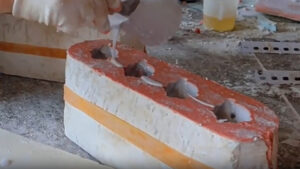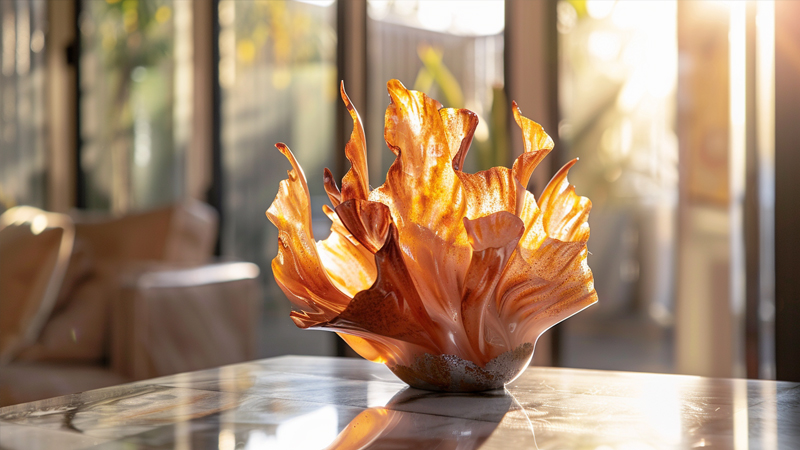
Cleaning resin sculptures requires careful techniques and gentle products to maintain their vibrant finish and intricate details.
Effective cleaning of resin sculptures involves dusting with soft tools, deep cleaning with mild solutions, avoiding harsh chemicals, and restoring shine with proper polish.
Let’s break down the best practices for cleaning resin sculptures.
What are the best dusting and surface cleaning methods for resin?
A gentle dusting routine is essential for preserving the delicate finish of resin sculptures.
Use a soft microfiber cloth or a gentle brush to remove dust without scratching the resin surface.
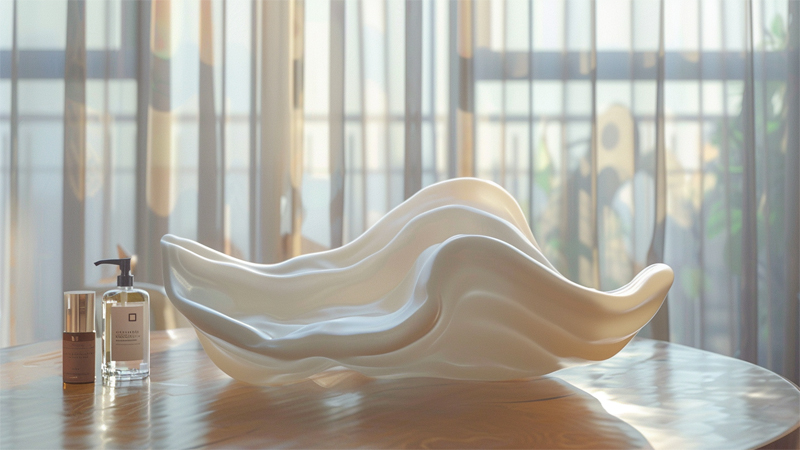
To keep resin sculptures in pristine condition, the first step is to remove dust and loose particles without damaging the surface. I prefer using a soft microfiber cloth1 because it attracts dust without scratching. For statues with intricate details or hard-to-reach areas, a soft, clean paintbrush works wonders. The key is to use gentle, circular motions to avoid applying excessive pressure that might mar the delicate finish. It is important to ensure that the tools used are clean and free of any debris that could scratch the resin.
Additionally, if the sculpture is outdoors or in a high-dust environment, I sometimes use a small, handheld vacuum with a brush attachment2 on a low setting to carefully remove surface dust. This method can be especially useful for larger pieces where manual dusting might be time-consuming. The combination of these gentle techniques preserves the visual appeal of the sculpture while preparing the surface for deeper cleaning if needed. Regular dusting, done weekly or bi-weekly depending on the location, significantly reduces the accumulation of grime and prevents potential damage over time.
| Dusting Tool | Benefit |
|---|---|
| Microfiber Cloth | Soft, non-abrasive, effective at trapping dust |
| Soft Paintbrush | Reaches intricate details without causing scratches |
How can you deep clean resin without damaging the finish?
For deep cleaning, a careful approach with mild cleaning solutions3 is necessary to preserve resin integrity.
Deep cleaning involves using diluted, pH-balanced detergents and gentle scrubbing techniques to remove stubborn stains.
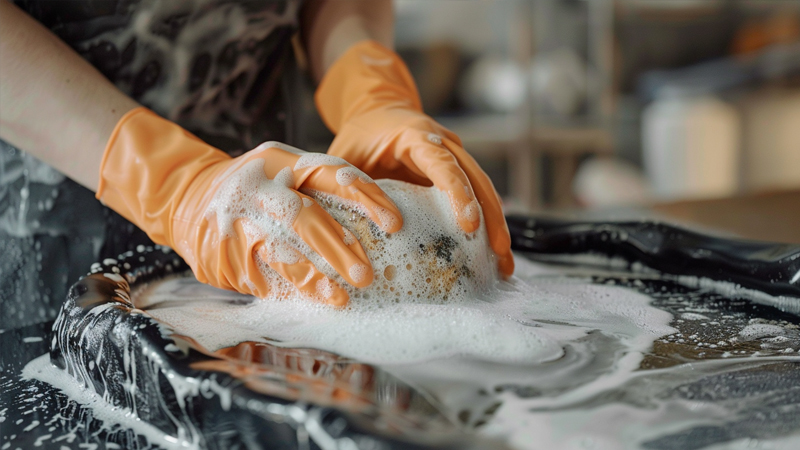
When deeper cleaning is required, it is crucial to use mild cleaning agents that are safe for resin. I usually start by preparing a solution of warm water mixed with a small amount of a pH-balanced detergent. This gentle mixture effectively loosens dirt and grime without causing the resin to become cloudy or discolored. Using a soft sponge, I lightly scrub the surface, being especially cautious around any decorative elements. For persistent stains, I may apply the cleaning solution directly to the affected area and let it sit for a few minutes, then gently work it in with a soft-bristled brush.
After scrubbing, it’s vital to rinse the sculpture thoroughly with clean water to remove any residue, as leftover soap can lead to film buildup on the surface. I then dry the piece with a lint-free cloth, ensuring no water spots are left behind. This method not only cleans the resin deeply but also safeguards its original finish. A gentle cleaning process like this helps in preserving the sculpture’s color and texture, which are essential to its artistic appeal.
| Deep Cleaning Step | Recommended Action |
|---|---|
| Prepare Mild Solution | Use warm water and pH-balanced detergent |
| Gentle Scrubbing | Apply with a soft sponge or brush |
| Thorough Rinsing | Remove all cleaning residue with clean water |
| Drying | Use a lint-free cloth to prevent water spots |
What products should be avoided when cleaning resin?
Using the wrong chemicals can damage resin, so it is crucial to avoid harsh substances.
Avoid bleach, ammonia, and abrasive cleaners, as these chemicals can cause discoloration and weaken the resin structure.
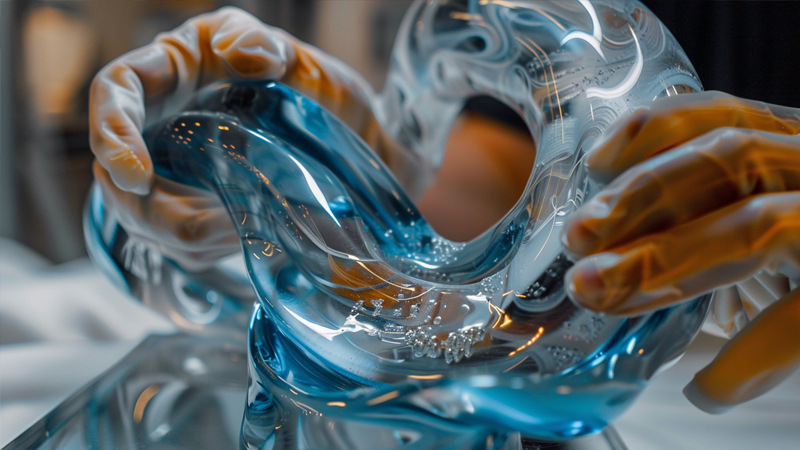
In my experience, one of the most important aspects of cleaning resin sculptures is knowing which products to avoid. Harsh chemicals such as bleach and ammonia are particularly dangerous; they can cause significant discoloration and even weaken the resin over time by breaking down its protective coatings. Abrasive cleaners and scouring pads are also a no-go, as they create tiny scratches that not only mar the appearance but also make the surface more susceptible to further damage and dirt accumulation.
It is best to steer clear of any cleaning agent4 that promises “quick fixes” with aggressive formulas. Instead, I opt for solutions that are specifically formulated for delicate materials. Reading product labels carefully has become second nature to me, and I always test a new cleaning product on a small, inconspicuous area before using it on the entire sculpture. This precaution ensures that no adverse reactions occur, preserving the overall integrity of the resin piece. The focus should always be on gentle, non-abrasive cleaning methods that maintain the sculpture’s beauty and durability.
| Product to Avoid | Reason |
|---|---|
| Bleach | Causes discoloration and weakens resin structure |
| Ammonia | Harsh on resin and can strip protective coatings |
| Abrasive Cleaners | Scratches and damages the delicate surface of resin |
| Scouring Pads | Risk of permanent scratches and surface wear |
How can you restore shine to dull resin surfaces?
Restoring shine involves gentle polishing and protective treatments to rejuvenate the resin’s luster.
Polishing techniques using non-abrasive products and a microfiber cloth can revive the resin’s natural gloss.
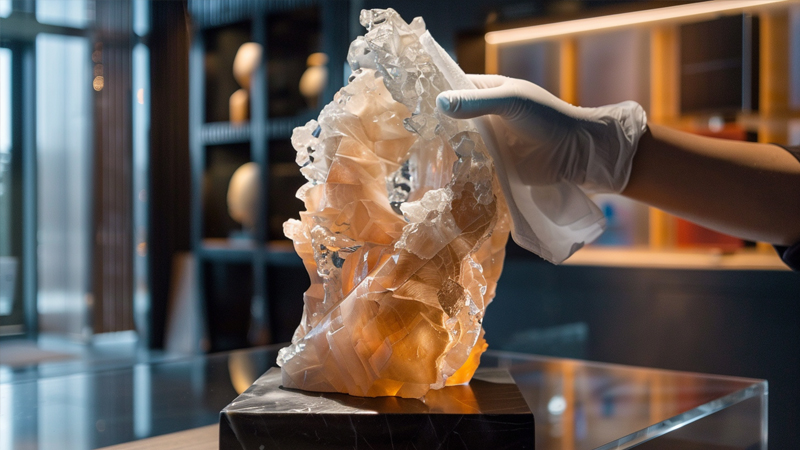
Over time, even well-maintained resin sculptures can lose their initial shine and appear dull. To restore the vibrant gloss, I use a gentle polishing process tailored for resin. After cleaning the sculpture thoroughly, I apply a specialized resin polish5 that is non-abrasive and designed to rejuvenate the surface. Using a soft microfiber cloth6, I work the polish into the resin in small, circular motions. This method helps to remove any micro-scratches and restores the smooth, reflective finish that makes resin so appealing.
For best results, it is important to polish in a well-lit area so that I can monitor the progress and ensure even coverage. In cases where the resin has suffered minor scratches or scuffs, the polishing compound works to fill and smooth out these imperfections, resulting in a uniform, lustrous appearance. I always finish the process by gently buffing the surface with a clean part of the cloth to enhance the shine further. Regular polishing, combined with proper care and maintenance, can significantly extend the visual appeal and life of resin items.
| Polishing Step | Benefit |
|---|---|
| Apply Resin Polish | Fills micro-scratches and restores gloss |
| Microfiber Cloth | Ensures gentle, even application without scratching |
| Circular Motions | Provides uniform coverage for a consistent shine |
| Final Buffing | Enhances overall luster and smooth finish |
Conclusion
Gentle cleaning, avoiding harsh chemicals, and careful polishing keep resin sculptures vibrant and long-lasting.
-
Explore the advantages of microfiber cloths for cleaning delicate surfaces, ensuring your resin sculptures remain pristine. ↩
-
Discover tips on using a handheld vacuum to safely remove dust from larger resin sculptures, enhancing their longevity. ↩
-
Explore this link to discover effective mild cleaning solutions that preserve resin integrity while ensuring a deep clean. ↩
-
Find out which cleaning agents are safe for resin sculptures to maintain their beauty and integrity. ↩
-
Learn about specialized resin polish and its benefits for restoring the luster of resin surfaces, ensuring long-lasting shine. ↩
-
Find out why using a microfiber cloth is essential for polishing resin without causing scratches, ensuring a perfect finish. ↩


